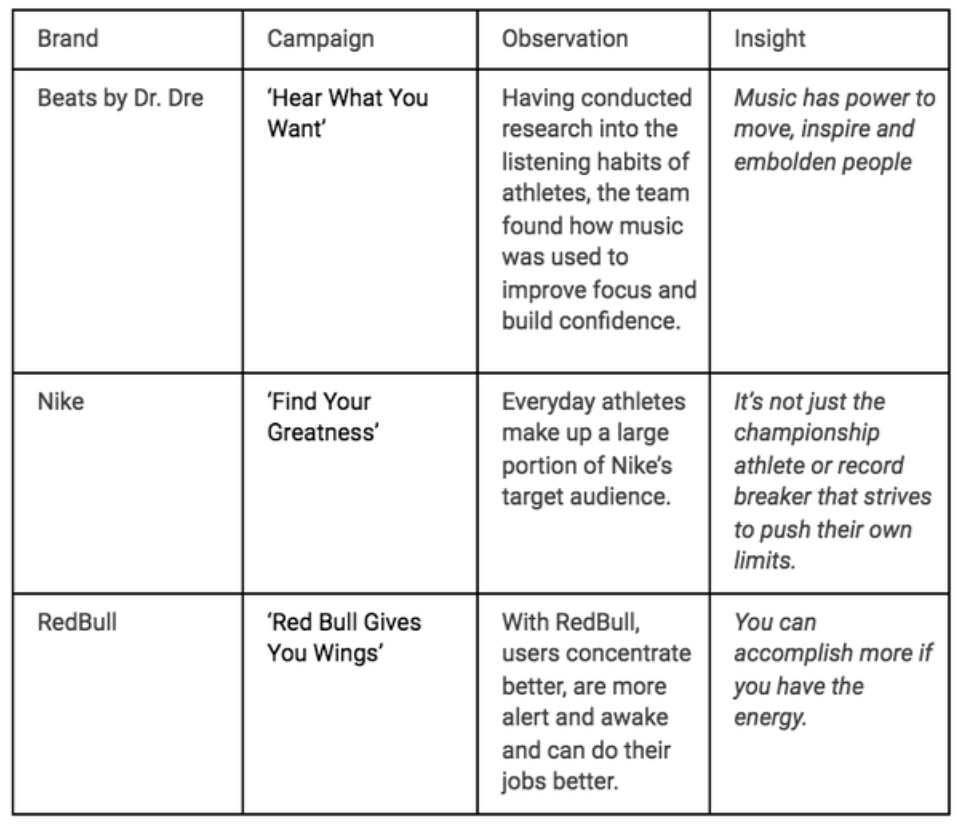Data & Heart will set you apart - how to deliver insights.
- Jess Norto
- Nov 1, 2018
- 4 min read

In the world of advertising and marketing, we need insights. They inform any impactful creative marketing campaign. Why? Because insights are deep and meaningful, emotional information, that sparks thought and aligns with human motives. If they’re on point, they will be the driving force behind truly connecting with your audience or not.
Insights are the “ah huh” moment when you’re looking for answers. They are springboards for creative execution, inspiring thought and supporting why we do what we do. Insights are the ‘because’ part of decision-making, they uncover realizations and truths about a consumer and their relationship or mindset with a brand.
In every business, you have an objective to meet – usually (to no surprise) to make money, which requires a commitment from a customer. So, to get them to take action (spend their precious dollars) you need to understand why they will commit to you, or on the flip side, the reason why they wouldn’t. Insights are the glue between the issue and your idea. With no glue, you have no stickiness with your customers.
A great insight equates to great work. Period. Now, let's talk about how to develop them.
An Observation, isn’t an Insight.
As marketers, we love the idea of “insights”. It makes us sound, well, insightful. However, if
there’s one thing that boils my blood, it’s the common misuse of this word. It devalues the immense amount of effort that goes behind the digging required to expose these gems. The most common misuse is when an ‘observation’ is described as an ‘insight’.
Observations are still highly valuable and are completely worthy of mentioning within our reporting and strategizing, so we shouldn’t be scared to say that and call them out for what they are. Observations highlight patterns in behavior and it takes smarts to be able to pull away the fluff and outline trends, showcase patterns in data and sum up marketing activity in a clear way to comprehend. Let's clean up the misperception between ‘observations’ and ‘insights’, do our own industry a favor and stop throwing around this terminology like confetti!
An observation is not going to outline what the motivation was for a consumer’s action, it will merely show you that they made that action.
An observation will outline apparent happenings, whereas, insights translate reasoning behind emotional decision making.
An observation is fact stating, an insight expresses a revelation.
An observation is obvious, an insight provides perspective.
See the below three examples to bring this to light:

Hard data VS. heart-to-heart
We live in a world where pretty much everything we do is captured into a databank of some sort (creepy, yah). The ability to access information about consumers actions has never been more sophisticated and we’re lucky that we have this tool available to us. We are surrounded by data, but data alone will not give you the answers to ‘why we do what we do’. In the digital world, we start to assume that insight are innately connected to data. In the broader view, we should look at how metrics are used as part of the process, not by any means the endpoint of our insight-searching journey.
Hard data gives you exactly that – numbers. Quantitative information, which will show patterns, proof of action, numbers, and statistics. It shows the aftermath of action, which is important because it’s a form of indisputable proof, though it cannot tell you why someone felt compelled to act in a particular way.
On the path to developing your insights you should definitely look at data, it will give you a strong backbone to make assumptions based on activity. To truly understand a person's decision making motives you must talk (or understand) heart-to-heart with people – Qualitative research is where you’ll find people’s opinion and you’ll have light shed on to the why we do what we do.
Think focus groups, ethnographies, observing polls/forums and opinionated commentary online where people can provide their voice on a matter. If your insight can outline why we’re doing what we’re doing, then it’s a worthy one which will relate respectively with your audience. If you can pinpoint the tension point into the given experience you’re researching then you will discover the human motive which will drive action, or better yet, understand the lack thereof, depending on your situation/issue set up.
Put method to madness
A common misconception is that insights should be a lengthy piece of research. Wrong. The research is the research, and the insight is a derivative of all the madness you go through to ultimately find your nugget of truth. An insight should not exceed three sentences. As mentioned, it should be the “ah-huh” moment, the lightbulb of reasoning and light at the end of the tunnel (of quantitative and qualitative research).
During the research part of your planning process, there’s no doubt you’ll go through hundreds of sources to build your case. You will not have the time to show all of your findings when presenting how you derived your insight, nor will it be in your favor to bombard your client/partner with an excessive amount of information. The aim is to inspire thought, not exhaust information.
Less is more - present quality findings, it’s not about quantity or how much information, it’s about the right information to ignite thought.
Showcase data that’s easy to digest. Tabs upon tabs of numbers is not insightful, it’s a headache.
Use bold statements that tell a story with your findings, rather than complicated metrics that you need to explain. An insight should need no explanation.
Insights are invaluable, and they are the key to being able to deliver great work. They are not easy to find and require data and heart to truly set you apart. They should be short in length, simple to understand and whittle down an immense amount of research into a standout statement that outlines a revolution of some sort.
Your insight enthusiast,
JessNorto




Comments